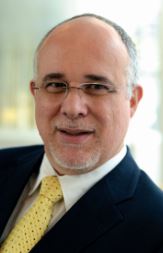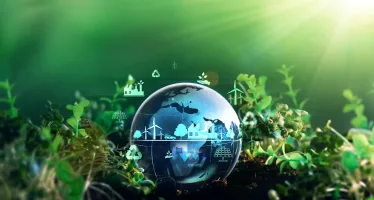MIGA (World Bank): Energy in Africa – The Many Sides of Sustainability

Author: Antonio Barbalho
Africa is booming—mostly. Much of the continent has experienced strong and sustained economic growth over the last two decades. Many countries have also been shielded from the recent Great Recession due to favorable commodity prices and relatively weak ties to the advanced economies that have come into difficulty.
Development indicators for health and education have improved significantly. But Africa is a diverse region and its growth is multi-speed. The continent’s most fragile countries have experienced low and irregular growth, largely as a result of conflict. And serious development challenges remain in a continent where governance and transparency are weak; infrastructure is underfunded; health and education indicators are still poor in comparison to other regions; and the energy deficit is high. While some have argued that energy is a strong contender for the most viable route to development, it is important to note that only one third of people living in sub-Saharan Africa have access to power.
As the political risk insurance arm of the World Bank that provides guarantees to the private sector, we underline that the sector has been a powerful instrument in bridging the region’s energy gap and the its role is growing swiftly. But, the reality is that there are few truly good projects in the short term and those that do exist are facing increasing complexity.
“As the political risk insurance arm of the World Bank that provides guarantees to the private sector, we underline that the sector has been a powerful instrument in bridging the region’s energy gap and the its role is growing swiftly.”
Why? Many of the reasons we are already familiar with—structural inadequacies, monopolistic ownerships, difficult market and grid access for new actors, limited innovation, and political risk. Now, we have added other considerations that have resulted precisely from the opening of the sector to sustained private-sector involvement. Some important dynamics here include increasing interest from the BRICS and other countries (primarily in Asia) as sources of investment; expectations of capital safety from investors; and increasingly sophisticated demands from host countries as their experience with the private sector increases.
These dynamics need not be show-stoppers—to the contrary—but they do need to be bridged.
In Africa, the interplay between energy supply and demand has been particularly difficult. It is estimated that at least $40 billion a year is required to meet future demand in the African power sector, compared with current yearly investment of less than one-quarter of this amount.
On the demand side, Africa’s population is growing quickly, compounding the energy shortage problems even further. On the supply side, measures need to be put in place to ensure the sector works well and is financially viable. There is a lot of work to do in this regard.
“It is also important to note that these credit enhancement tools offer benefits that extend beyond financial security to the investor or lender.”
One important word connects supply and demand: Sustainability. The word has several meanings in this context. To be sustainable in Africa, energy needs to be as green as possible, diverse, and affordable. A very important point to underline here is that if the energy sector in Africa is to be sustainable, it needs to be cost-effective both for the population it serves and to ensure the survival of providers.
Sustainable energy for the continent goes far beyond the sector’s environmental credentials. The challenge is a formidable one. Indeed, with Africa already grappling with a significant energy deficit and the climate change agenda moving forward, what has been difficult will become worse.
How can governments, investors, and financiers manage these challenges? These players need to be creative and use credit enhancement where it can be applied to continue to attract new investment and new models.
Here, risk insurance products like those offered by MIGA have a very important role to play. Investment guarantees offered by MIGA (as well as other public and private-sector providers) have generally been viewed in the rubric of political risk insurance. Yet, they are increasingly becoming important as a credit enhancement tool that can ensure a more stable, long-term partnership for energy providers and off takers—as energy projects inevitably involve an insurable commitment from a sovereign or sub-sovereign.
How Does this Work? Thika Power Plant in Kenya
When What’s Good for the Government is Good for the Energy Producer.
MIGA’s recent support to the Thika power plant in Kenya is a good example of how credit enhancement can work in practice. The project is particularly important as it represents the first time an international commercial bank has provided long-term financing to a power scheme in the country.
While the Kenyan power sector has gone through relatively successful reform since the late 1990s, with a number of long-term power purchase agreements (PPAs) supported by international investors, private-sector investment and long-term commercial bank financing has remained difficult—partly due to the perceived country risk after the civil disturbances following the 2007 election. Heretofore, independent power projects (IPPs) were funded mainly through international or bilateral development finance institutions or export credit agencies.
The Thika project is one of three thermal IPPs awarded through an international competitive bidding process to address rapidly growing demand, limited electricity generation and connections, and over-dependence on drought-prone hydropower in Kenya. The project also addresses the Kenyan government’s attempts to achieve a more stable and diversified energy mix to increase the country’s energy independence and reduce reliance on expensive and inefficient emergency diesel plants.
The project consists of the development, design, construction, and operation of an 87MW thermal power plant in the town of Thika, located about 35 kilometers from Nairobi.
Thika’s commercial lender is Absa Capital from South Africa, which augments financing from the African Development Bank and the International Finance Corporation (IFC). This breakthrough was made possible largely due to an innovative structure that has three key elements to the payment security arrangement: letters of credit backstopped by World Bank partial risk guarantees to support short-term liquidity; a power purchase agreement with KPLC; and a letter of support from the Kenyan government with termination payment clauses guaranteed by MIGA.
The new structure used in this project was particularly interesting because it substantially reduced (and deferred) the contingent liabilities for the host government, while making the plant viable from the perspective of international commercial banks.
The Thika power project has also benefited from the synergies of three World Bank Group instruments: an IFC loan, a World Bank partial risk guarantee, and a MIGA guarantee. The World Bank Group institutions worked together closely to coordinate and share due diligence, maximize efficiency, and reduce the burden on the sponsor and other lenders.
It is also important to note that these credit enhancement tools offer benefits that extend beyond financial security to the investor or lender. Put simply, they compel projects to maintain certain standards that are in line with global best practices. For example, MIGA-supported financing must go through credit committees that examine the project’s bona fides. Our environmental and social safeguard policies are also a powerful tool for identifying risks, tightening development costs, and improving project sustainability. Projects are expected to comply with those policies and guidelines, as well as applicable local, national, and international laws. This adherence to standards is an important added value in energy projects in particular.
Looking to the Horizon: What’s Next?
As project complexity increases — for investors, lenders, host governments, and the environment — so structures will have to evolve. Creativity in applying new applications to not-so-new products like political risk insurance is the only steady approach in this environment.
From MIGA’s perspective, this approach is not only bankable, but essential to improve the lives of hundreds of millions of people who live in the 25 African countries that are currently experiencing energy crises. Without electricity for homes, factories, and hospitals, the continent’s recent economic successes and development gains are a reality for only a portion of the population.
There is another boom in Africa: the effective partnership of the private sector, host governments, and other actors (like MIGA and many others) that are working to achieve good and lasting investments in energy.

About the Author
Antonio Barbalho is Sector Manager for Energy and Extractive Industries at the Multilateral Investment Guarantee Agency (MIGA), the political risk insurance arm of the World Bank Group.
You may have an interest in also reading…
Paul Krugman: A Plea for a Return to Basics in Finance
Author of no less than twenty books, over 200 scholarly essays in peer-reviewed academic journals and more than 750 articles
Workers are Shunning Companies That Fail to Address Climate Issues
Concern about climate change has become so extreme that some people feel unable to perform at work because of “eco-anxiety”.
Andrew Alli: Helping Unlock a Continent of Opportunity
Africa is still in desperate need of investment. The World Bank estimates that Africa requires $93 billion annually for the


















































































